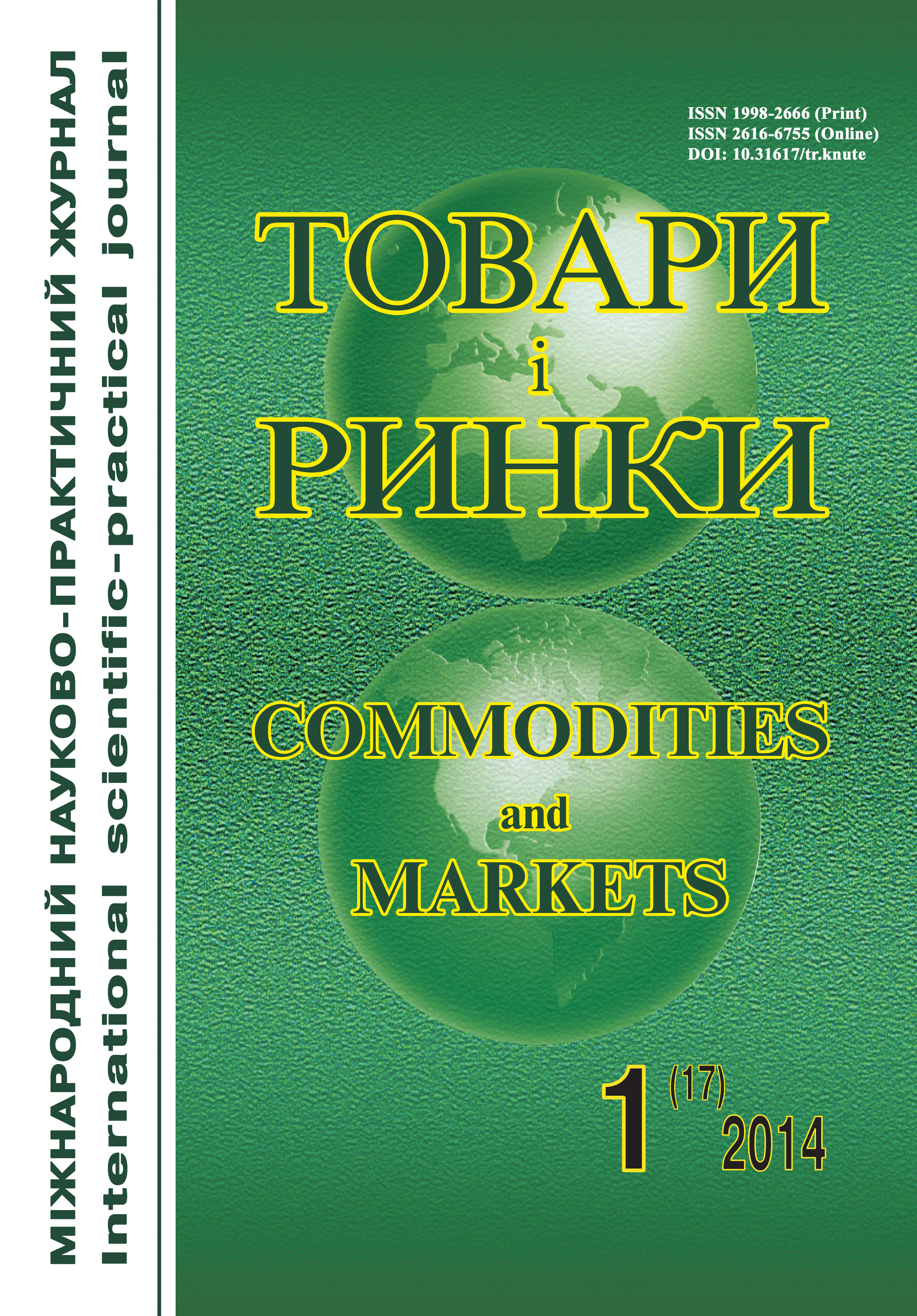Amino acid content of products for enteral nutrition
Keywords:
amino acid content, biological value, products for enteral nutritionAbstract
Background. The compliance of nutrition with human body’s metabolic needs becomes especially important for the people with hyper metabolism during treatment and recovery periods. Nowadays there is no enteral nutrition of domestic production at the Ukrainian market, while foreign ones have limited assortment range and are of high value. Proteins are the most important component of providing the needs of people with physical injuries and wrapped lesions, during high physical and emotional stresses, while the main indicator of their biological value is amino acid (AA) composition.
Purpose of the study is researching the amino acid composition and biological value of products for enteral nutrition protein component.
Objects of the research are the developed products for enteral nutrition on the soluble dry basis "Reabilakt" and "Reabilakt-D". Product Peptamen, produced by Nestle (Switzerland) was the control of the study.
Material and methods. Amino acid composition is researched with the help of liquid-column ion-exchange chromatography [10–12] using an automatic amino analyzer AAA 400 produced by Ingos – Laboratory Instruments (Czech Republic) after acid hydrolysis. Cracking into separate amino acids was done by a chromatographic column filled with ion exchange resin Ostion LG FA.
The biological value of the protein component was assessed by comparing with the amino acid composition of the protein, which is defined on the recommendations of the Expert Committee FAO / WHO [13–15], using the coefficient of amino acid differences swift (brew) [16; 17].
Results. It has been established that proteins of designed products for enteral nutrition have high biological value because of balanced composition of amino acids. Dominant AA for all products is tryptophan, the amino acid score of which is 145, 175, 148 %; limited for products "Reabilakt" and "Reabilakt-D" – lysine, for control – phenylalanine and tyrosine. The improvement of amino acid composition of the developed products is explained by using concentrated whey protein WPC-80 of high biological value. The biological value of the protein of the developed products is high, and for 15 and 13 % higher than the corresponding value of the control sample.
Conclusion. Proteins of the developed products for enteral nutrition are characterized by a high content of essential AA and glutamine, high maintenance of which according to the recommendations of professionals is essential to the recovery of the affected parts of the body.
References
Opportunities and Key Players in Clinical Nutrition ; ed. F. Liotti. — Business Insight. — 2012. — Vol. 8. — 119 p.
Prytul's'ka N. V. Suchasnyj stan i tendencii' rozvytku rynku produktiv dlja nutrityvnoi' pidtrymky ljudyny / N. V. Prytul's'ka, D. P. Antjushko, Ju. M. Motuzka // Harchova nauka i tehnologii' ONAHT. — 2012. — No 4 (21). — S. 106—108.
Popova T. S. Nutritivnaja podderzhka bol'nyh v kriticheskih sostojanijah / T. S. Popova, A. E. Shestopalov. — M. : M-Vesti, 2002. — 319 s.
Schroeder D. Effects of immediate postoperative enteral nutrition on body composition, muscle function and wound healing / D. Schroeder, L. Gillanders, K. Mahr // Journal of parenteral and enteral nutrition. — 1991. — Vol. 15, N 4. — P. 376—383.
Lejderman I. N. Nutritivnaja podderzhka v otdelenii reanimatologii i intensivnoj terapii. Standartnye algoritmy i protokoly : ucheb.-metod. posob. dlja vrachej, klinicheskih ordinatorov, vrachej-internov / I. N. Lejderman, A. V. Nikolenko, O. G. Sivkov. — M. : Uralo-Sibirskaja assoc. klinicheskogo pitanija, 2010. — 36 s.
Luft V. M. Klinicheskoe pitanie v intensivnoj medicine / V. M. Luft, A. L. Kostjuchenko. — SPb. : Dilja, 2002. — 174 s.
Heyland D. K. Enteral nutrition in the critically ill patient: a critical review of the evidence / D. K. Heyland, D. J. Cook, G. H. Guyatt // Intensive Care Medicine. — 1993. — N 19. — P. 435—442.
Griffiths A. Meta-analysis of enteral nutrition / A. Griffiths, A. Ohisson, P. Sherman // Gastroenterology. — 1995. — Vol. 108, N 4. — P. 56—67.
Antjushko D. Reologichni vlastyvosti produktiv dlja enteral'nogo harchuvannja / D. Antjushko, Ju. Motuzka, R. Romanenko // Mizhnar. nauk.-prakt. zhurn. "Tovary i rynky". — 2013. — No 1 (15). — S. 125—130.
James R. Instruction manual single-column amino acid analys / R. James, Ph. D. Benson. — California, USA : Durrum Chemical Corporation Printed, 1976. — 35 p.
Kozarenko T. D. Ionoobmennaja hromatografija aminokislot / T. D. Kozarenko. — Novosibirsk : Nauka. Sib. otd-nie, 1975. — 134 s.
Kozarenko T. D. Ionoobmennaja hromatografija aminokislot (Teoreticheskie osnovy i praktika) / T. D. Kozarenko, S. N. Zuev, N. F. Muljar. — Novosibirsk : Nauka. Sib. otd-nie, 1981. — 160 s.
Skurihin I. M. Vse o pishhe s tochki zrenija himika / I. M. Skurihin, A. P. Nechaev. — M. : Vyssh. shk., 1991. — 228 s.
Chernikov M. P. Proteoliz i biologicheskaja cennost' belkov / M. P. Chernikov. — M. : Medicina, 1985. — 231 s.
Potrebnosti v belke. Doklad obedinennoj jekspertnoj gruppy FAO/VOZ. — Zheneva : VOZ, 1966. — 90 s.
Tolstoguzov V. B. Novye formy belkovoj pishhi (Tehnologicheskie problemy i perspektivy proizvodstva) / V. B. Tolstoguzov. — M. : Agropromizdat, 1987. — 303 s.
Rogov I. A. Himija pishhi / I. A. Rogov, L. V. Antipova, N. I. Dunchenko. — M. : KolosS, 2007. — 853 s.
AKE Recommendation: Enteral and Parenteral Support in Adult. — Germany : Austria : [s. n.]. — 2000. — 92 p.



